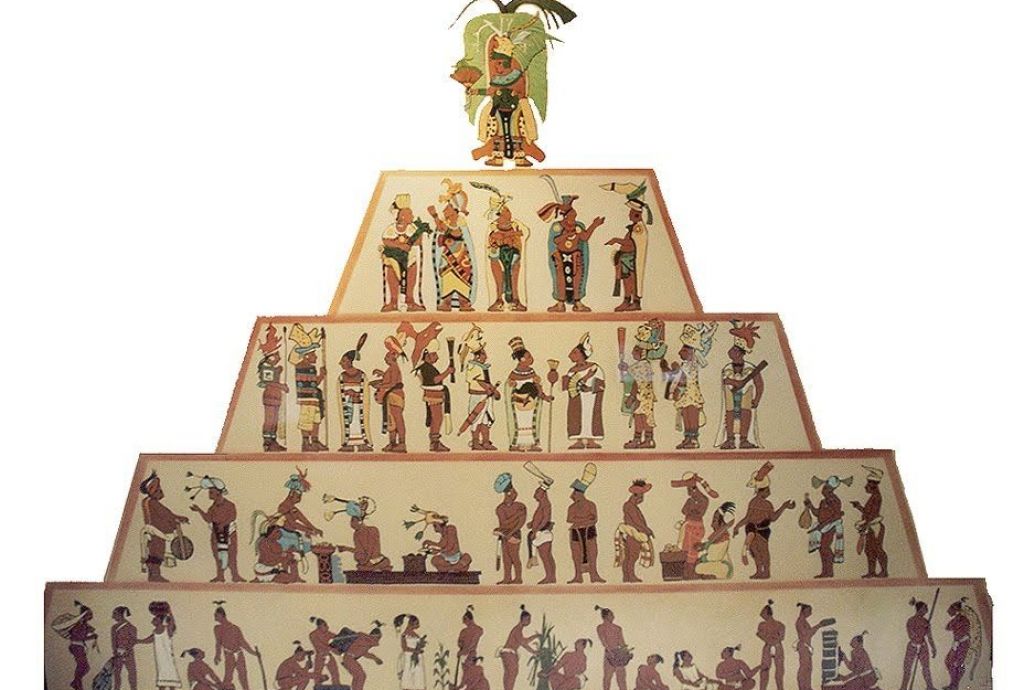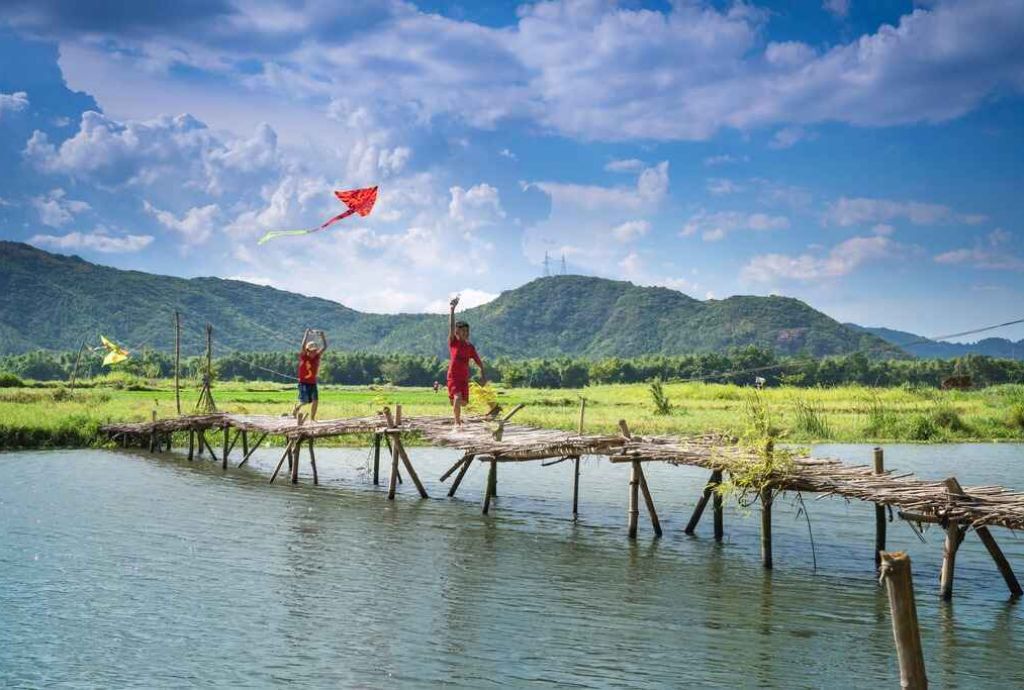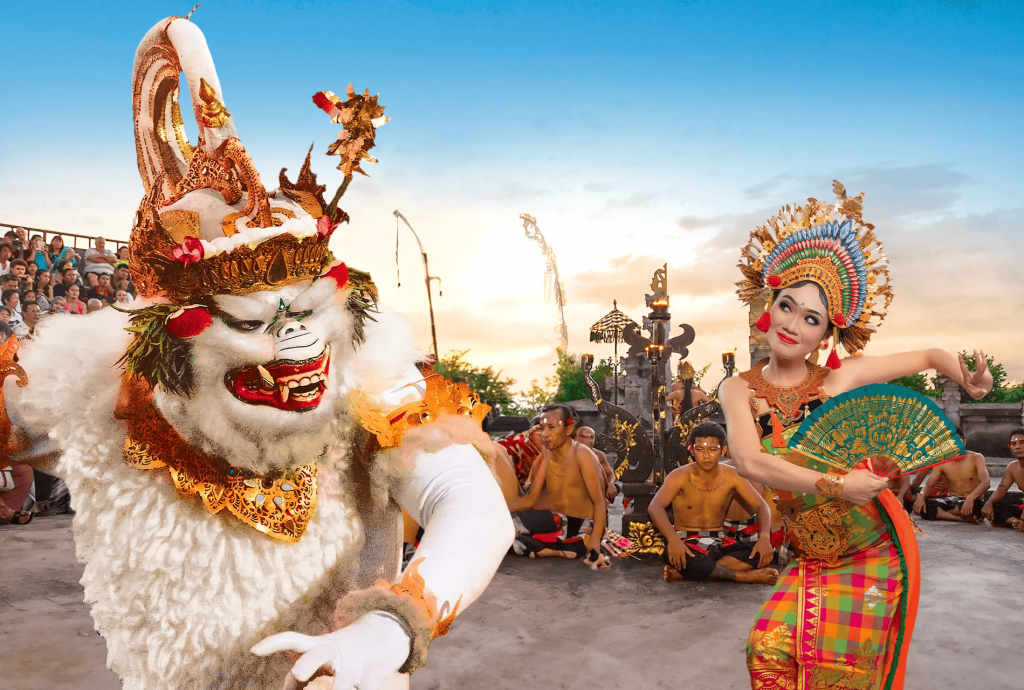
Kites in Bali

All You Need to Know about Kites in Bali
Flying kites in Bali marks the peak of the dry season when the wind blows strongly. During this season, the pelayang (a term for kite hobbyists) have started to fly their kites which have been a part of Balinese culture for hundreds of years. These hobbyists are also often referred to as Rare Angon. Find out more about kites in Bali in this article:
History of Kite in Bali
In Bali, people call the act of flying kites "melayangan," and it is closely connected to the ancient story of Rare Angon. Rare Angon is believed to be the God of Kites in Balinese culture. Legend has it that during the kite season or after the harvest, Rare Angon comes down to Earth. He carries a flute, which he plays to summon the wind.
Rare Angon is anybody who is enthusiastic about making and flying kites in Bali.
Photo from Canva
Apart from the mythical tale, flying kites is a popular activity among farmers and shepherd boys after the harvest season. They take advantage of this time to fly kites in the freshly cut rice fields while taking care of their animals.
The term "Rare Angon" can be understood as a shepherd boy. It perfectly describes the cultural context in which this tradition developed, with children playing the role of shepherds while playing the kites.
Various Shapes of Kites in Bali
Balinese people have a rich tradition of creating various types of kites. These kites can be classified into three main traditional shapes in Bali. However, over time, Balinese people have also embraced a free and creative approach, crafting kites in the form of cars, ships, and even popular characters and public figures in 3D. While the possibilities are endless, we will focus on the three traditional types that are frequently made for competitions:
Bebean
The bebean kite, named after the Balinese word for "fish" (be), is crafted in the shape of a fish. This kite features a head, body, legs, and kepes (also known as gleber), which are flag-like pieces of cloth on its right and left sides. In larger sizes, the bebean kite may also incorporate a sound element called guwangan.
Guwangan consists of a thin wooden stick fastened with plastic or rattan ribbon, forming a semi-circular structure. When the wind blows, the plastic or ribbon produces a distinct sound.
Bebean is the fish-shaped variant of Balinese traditional kites.
Photo from Canva
During competitions, judges evaluate the bebean kite based on its ngelog, which refers to the harmonious left and right motion. Additionally, the combination of colors, the balanced shape of the head, body, legs, kipasan kepes, and the sound of guwangan are all essential factors in the assessment.
Different regions have their own unique styles and characteristics of bebean kites. Examples of these styles include Badung, Denpasar, and Sanur styles.
Janggan
Janggan, which translates to "dragon," derives its name from the dragon-head shape found at the tip of the kite. This particular kite is easily recognizable due to its exceptionally long tail. When we say long, we mean it's truly lengthy. On average, Janggan kites measure around tens to a hundred meters in length.
Janggan kite is the highlight and most anticipated kite in the Bali Kite Festival.
Photo from Canva
In 2016 however, the Layangan Naga Raja (dragon king kite) set a record with a wingspan of 11.3 meters and a staggering length of 250 meters, equivalent to a quarter of a kilometer. Its weight is equally astonishing, reaching 707 kg or 1558 pounds.
It comes as no surprise that Naga Raja requires assistance from numerous vehicles to transport its components to the flying site, along with hundreds of people to launch, maneuver, and control it. The majestic kite last graced the skies in 2019, and its banjar (community organization) has decided to temporarily retire the kite indefinitely.
Pecukan
The pecukan kite is the simplest in shape compared to other traditional kites. However, despite its simplicity, the process of creating this kite is the most intricate because it requires extremely precise balance on both sides of the kite. Not just anyone or undagi (kite maker) can craft Pecukan type.
Pecukan kite is more simple in appearance but has the most demand for its creation.
Photo by Budiadyana on denpasarnow.com
Its shape is similar to the body of the janggan kite, with the only distinction being the frame. The body of the janggan kite has a round shape, while the pecukan kite is semicircular. Another distinguishing feature is that the tip of the pecukan kite needs to be twisted.
Flying the pecukan kite also requires a certain level of expertise. The person handling the kite (nunjuk) must have a deep understanding of the wind's strength. This kite is highly sensitive to gusts of wind, making it necessary to be mindful of the wind conditions while flying it.
Bali Kite Festival
This event, which has gained international recognition, is usually held by the Denpasar city government or various art communities in Bali. The kite festival is typically held in the Sanur area, either in Padanggalak or Pantai Mertasari. Due to the remarkable success and growing enthusiasm over the years, the Belega Layang-Layang Club (BALAC) has decided to join the trend and organize a similar event in Gianyar on July 22-23, 2023.
Teams participating in the competition represent various seka (kite community) and banjar (community organizations) from different areas. It is astonishing to witness the size of these teams, with an estimated count of 70-80 people on a single team, each having their distinct responsibilities. These include logistics management, handling the gamelan (traditional instrument), carrying the flags, and, of course, flying the kites.
Bali Kite Festival in Mertasari Beach, Sanur.
Photo by Johannnindito Adisuryo on Wikimedia Commons
Before and after the kites take flight, a ritual ceremony is conducted to purify the kites and offer prayers or mantras as an expression of gratitude for the abundant harvest. Even as the kites gracefully soar through the sky, the recitation of prayers continues, accompanied by the melodious sounds of the gamelan baleganjur.
In conclusion, the art of kite flying in Bali is more than just a recreational activity; it is a vibrant reflection of the island's rich cultural heritage. It is a testament to the creativity, skill, and deep-rooted traditions of the Balinese people. So, the next time you visit Bali, don't miss the opportunity to witness the awe-inspiring beauty of kite flying in Bali. Salam Rare Angon!
Topic Categories
- All 355
- Uncategorized 6
- Bali Villa 27
- Bali Politics 6
- Bali News Update 7
- Bali Shopping 3
- Bali Tourism 49
- Bali Spirituality 2
- Bali Beauty and Fashion 0
- Bali History and Culture 23
- Bali Property Appraisal 1
- Bali Property Financing 3
- Bali Property Insurance 1
- Bali Property Management 5
- Bali Environment 11
- Bali Pets 2
- Bali Health and Wellness 16
- Invest in Bali 23
- Bali Local Services 6
- Bali Food & Dining 12
- Bali Home Improvement & Design 6
- Bali Legal Tips 7
- Bali Neighborhood Guides 11
- Bali Property Market Trends 14
- Bali Property Advice 60
- Bali Attractions 25
- FAQ 2
- Living in Bali 45
Topic Tags
- All 355
- Uncategorized 36
- Villa for sale Umalas 3
- Villa for sale Kerobokan 3
- Villa for sale Oberoi 3
- Villa for sale Pererenan 3
- Villa for sale Batu Bolong 3
- Villa for sale Berawa 3
- Villa for sale Sanur 3
- Villa for sale Seminyak 3
- villa for sale Ungasan 3
- villa for sale Jimbaran 3
- villa for sale Nusa Dua 3
- villa for sale Pandawa 3
- Kerobokan 3
- Bali market report 1
- Villa for sale Canggu 5
- Villa for sale Uluwatu 5
- Bali Rentals 2
- Buying Process 6
- Labuan Bajo 0
- Bali Hospital 3
- Bali School 3
- Bali Beach 11
- Co-working Space 4
- Petitenget 3
- Australia 0
- China 2
- Bali Wedding 1
- Bali Flights 4
- Retire in Bali 5
- Nyepi 2
- Bali Villa Sale 20
- Bali Visa 4
- Bali Travel 28
- Villa Rental 9
- Airbnb 0
- PT PMA 3
- Bali Zoning Law 1
- Bali Tax 3
- Bali Property 52
- Double Six 0
- Sunset Road 0
- Nyanyi 3
- Legian 4
- Beach Club 5
- Oberoi 3
- Batu Bolong 3
- Batu Belig 2
- Business 3
- Legal 10
- Investment 39
- Tourism 65
- Travel 24
- Jimbaran 8
- Denpasar 2
- Seseh 5
- Eid al Adha 1
- Ascension Day 0
- Easter 0
- Vesak 0
- Islamic New Year 0
- Eid al-Fitr 1
- International Labor Day 0
- Independence Day 2
- Day of Silence 0
- Galungan Day 1
- Valentine 2
- Christmas 5
- New Year 4
- Lunar New Year 2
- Bali Market Trends 12
- Bali Art & Culture 18
- Bali Home Design 9
- Bali Health & Wellness 17
- Bali Food and Dining 15
- Bali Pets 3
- Bali Lifestyle 43
- Rice Field Front 1
- Jungle View 1
- River Front 0
- Rice Field View 6
- Ocean View 4
- Private Pool 0
- Fix and Flip 1
- Fixer-Upper 0
- Hotel & Resort 3
- Guest House 0
- Street Front 0
- Residential Zone 0
- Touristic Zoning 0
- Freehold 4
- Long Lease 7
- Short-Term 1
- Minimalist Villa 0
- Luxury Villa 13
- Turnkey Villa 3
- Residential Complex 0
- Exclusive Listing 1
- Off-Plan Property 4
- Studio 0
- Loft 0
- Apartment 8
- Villa 16
- Land 6
- Beachfront 4
- Family Villa 0
- Retirement Villa 1
- Investment Villa 31
- Digital Nomad 2
- Commercial Property 3
- Eco-friendly 0
- Contemporary Style 0
- Modern Style 1
- Javanese Style 0
- Rustic Style 0
- Traditional Style 0
- Bohemian Style 0
- Mediterranean Style 1
- Balinese style 1
- Nusa Penida 3
- Lombok 1
- Gili Island 3
- Amed 2
- Tabanan 9
- Cemagi 4
- Nusa Dua 9
- Sanur 6
- Umalas 7
- Berawa 5
- Ubud 11
- Tanah Lot 3
- Kuta 8
- Pererenan 6
- Uluwatu/Bukit Peninsula 32
- Seminyak 12
- Canggu 37
Relevant Articles you may like
About Bali Home Immo
Established in 2009, Bali Home Immo is the first real estate agency in Canggu with more than 7000 Bali properties listed in its database. Bali Home Immo (PT. Bali Properti Kontruksi) is a licensed property agency (SIUP-P4 certified) located in Bali, Indonesia and have been successfully operating as a trustworthy and reputable real estate agency with more than 13 years of experience. Long-standing partnerships and a committed, dedicated team are the driving force behind the work that takes place every day at Bali Home Immo.
As a member of the Real Estate Broker Association of Indonesia (AREBI), Bali Home Immo Property offers luxury real estate across the region to a local and international client base. Catering to a wide range of property requests, the team will ensure they can find a property, land or residential listing, to match each client’s personal requirements.
We have curated a wide selection of properties ranging from the land for sale, villas for sale and rent, as well as commercial space rental in Bali's most in-demand areas including Canggu, Seminyak, Pererenan, Umalas, and Uluwatu. Not only Bali, but our connection also reaches other popular destinations in Indonesia including Gili Islands, Lombok, Labuan Bajo, and more.
We also provide professional marketing services that will showcase the best of your Bali properties to more than +160k social media followers and maximise the potential to find buyers looking at villas for sale in Bali. With a thorough knowledge of the Bali property market inside-out, we deliver the most professional and data-driven valuation of your property at the most competitive price for your Bali properties.
Our expertise in the local market and extensive network affiliated with 93 local and international partners including Goplaceit.com, Rumah123, Kangaloo, Luxury Estate, and many more will also help you bring global exposure to your real estate investment and find your dream Bali property. Looking to buy villas for sale in Bali? Check out our online catalogue of Bali real estate and follow us on social media for updates.
Map
Send an Enquiry
Property Search
Sell/Rent My Property
Please fill this form and our listing agents will contact you to visit your property and/or give you a price valuation








